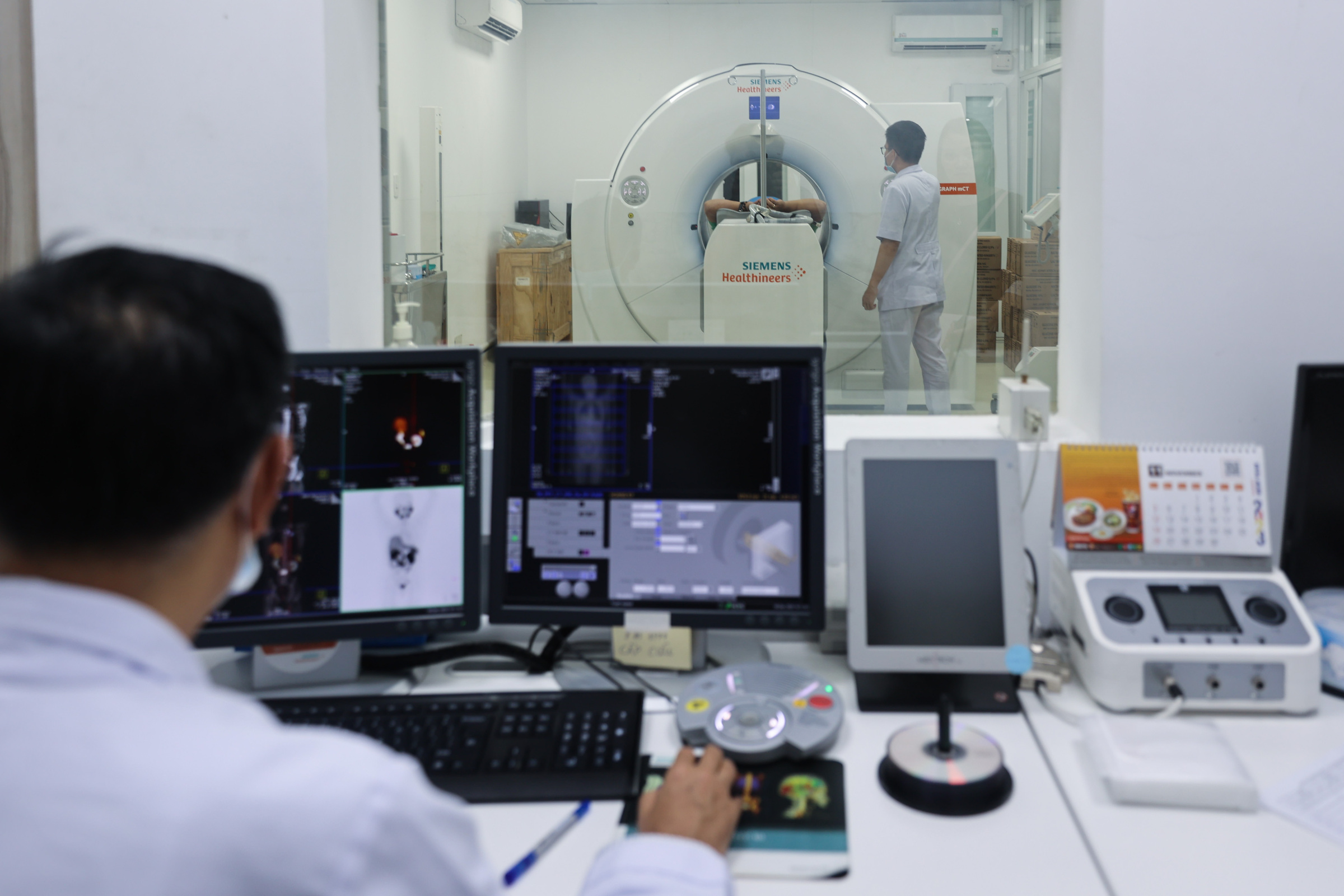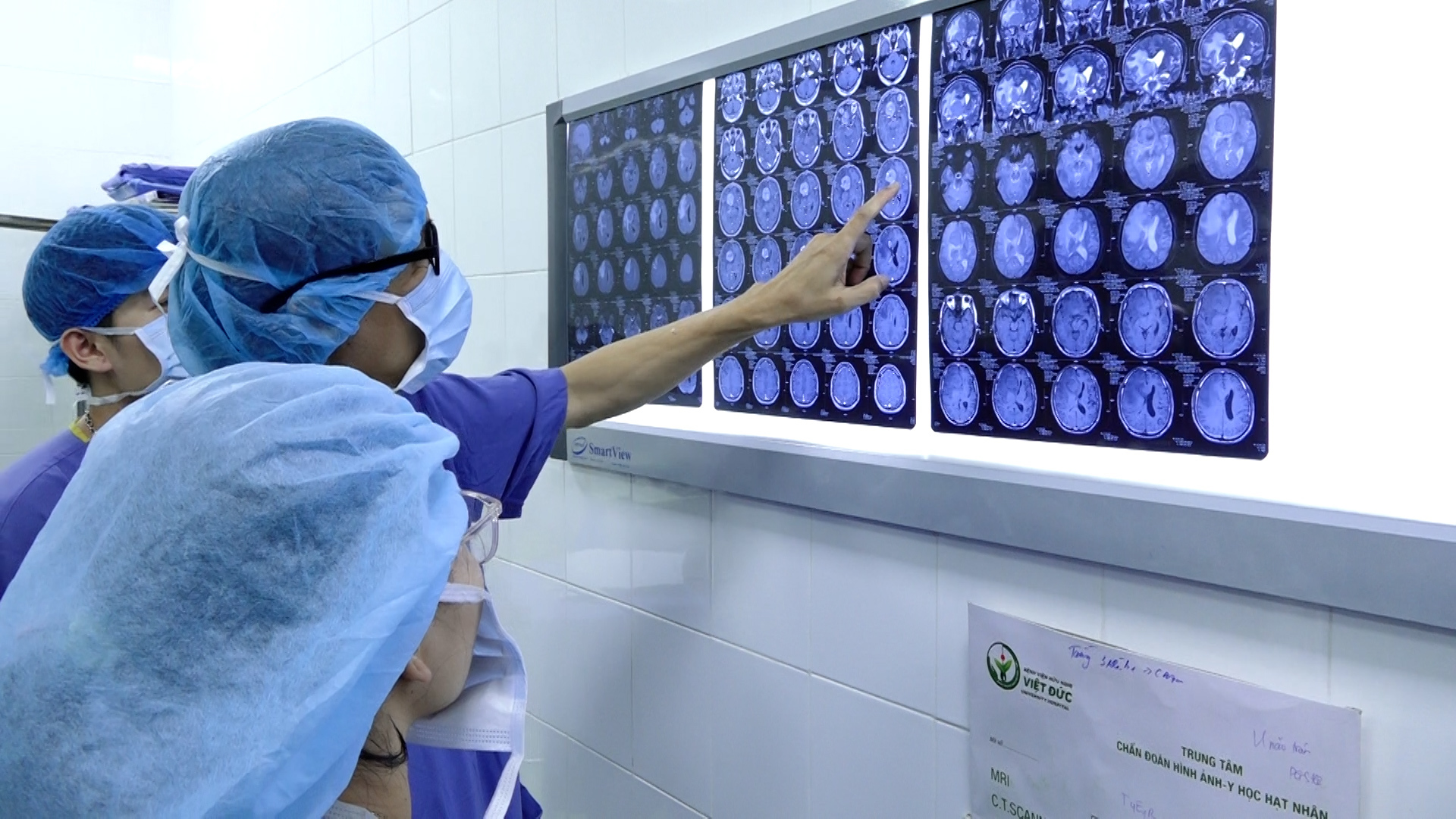Minh, 65, a long-time diabetic, visited a hospital in Ho Chi Minh City while visiting family. She underwent a battery of tests: blood work, urinalysis, CT scans of her abdomen, chest, coronary arteries, and heart. The nearly 20 million VND cost worried her daughter, who suspected overuse. The medical team, however, insisted the tests were necessary to screen for stroke and cardiovascular risks.
The results revealed high cholesterol, elevated uric acid, and a slight heart valve leakage requiring treatment. Despite this, Minh remained concerned about the cost. "I don't know how important these scans were," she said. "The doctor ordered them, so I did them. Luckily, the results weren't too serious." She later transferred her care to a public hospital with lower costs.
Minh's story is not unique. Medical imaging has become so common that many consider it routine during checkups. However, medical experts acknowledge the fine line between necessary and excessive testing.
Dr. Tran Minh Thieu, from the Department of Diagnostic Imaging at Trung Vuong Hospital, explained that evidence-based medicine is encouraged globally. Diagnostic imaging, endoscopy, and lab tests are crucial evidence for treatment decisions, interventions, and follow-up care, alongside clinical experience and patient preferences.
In Vietnam, the Ministry of Health requires hospitals to implement Radiology Information Systems and Picture Archiving and Communication Systems (RIS-PACS), highlighting the importance of diagnostic imaging. Imaging allows doctors to "see through" the body, detecting issues invisible to the naked eye. These results are the basis for explaining treatment plans to patients. Medical imaging is now so common that many people see it as a given during any medical examination.
 |
A doctor prepares a patient for a PET/CT scan. Photo: Quynh Tran |
A doctor prepares a patient for a PET/CT scan. Photo: Quynh Tran
Dr. Thieu has witnessed cases of missed or late-diagnosed appendicitis leading to serious complications like perforation, peritonitis, and intestinal paralysis, with poor prognoses. Today, most appendicitis cases are detected early through CT scans, enabling prompt surgery and quick recovery. Similarly, acute pancreatitis, previously difficult to diagnose based on symptoms alone, often resulted in infections and fatalities.
Early detection of lung cancer, previously challenging with X-rays, is now possible with low-dose CT scans. Advances in diagnostic imaging, alongside treatment breakthroughs, have significantly improved patients' quality of life.
In cancer treatment, Dr. Lam Duc Hoang, Head of the Head and Neck Radiation Oncology Department at Ho Chi Minh City Oncology Hospital, states that diagnostic tests are almost "indispensable." Imaging like ultrasound, CT, MRI, and PET/CT, along with lab tests, biopsies, and endoscopies, help determine the type of cancer, its stage, and metastasis, informing appropriate treatment.
For example, with lymphoma, doctors must pinpoint the lesion's location before treatment. Treatment for lymph node involvement differs significantly from treatment for lesions outside lymph nodes or in the liver or spleen. After remission, diagnostic tests help monitor for new lesions.
"The most important thing is for doctors to choose the most appropriate and effective tests based on the patient's condition and circumstances," Dr. Hoang said.
Some patients refuse diagnostic tests and suffer the consequences. Dr. Thieu recalls a patient with stomach and colon pain who avoided endoscopy due to fear. The cancer progressed rapidly, and the diagnosis came too late. Another case involved a student with headaches. The doctor suspected a cerebral aneurysm and recommended an MRI, but the student refused. He later died from a ruptured aneurysm during a soccer game.
Experts emphasize the blurred line between necessary and excessive imaging. Dr. Thieu suggests overuse can stem from a doctor's inexperience, leading to numerous tests out of an abundance of caution, incurring unnecessary costs for patients.
Lack of experience in interpreting X-rays, ultrasounds, MRIs, or CTs can lead to more expensive PET/CT scans. Some institutions even use the number of tests ordered as a key performance indicator (KPI), potentially incentivizing unnecessary testing.
In some places, all patients with knee pain undergo MRIs, despite the procedure typically being reserved for specific indications like fluid in the knee, ligament tears, or meniscus injuries. Patients might also be asked to repeat scans at different facilities, even though some imaging types are recommended 3-6 months apart for safety reasons.
 |
Diagnostic imaging greatly assists doctors in treatment. Photo: The Quynh |
Diagnostic imaging greatly assists doctors in treatment. Photo: The Quynh
According to Dr. Hoang, hospitals follow Ministry of Health guidelines and specific treatment protocols for each disease. Most patients undergo a stepped approach, avoiding the most expensive tests initially due to health insurance, hospital resources, and patient finances.
"While imaging technology is constantly improving, it still has potential health impacts. Overuse not only wastes resources but also exposes patients to unnecessary radiation and harmful substances," he said.
Many facilities advertise comprehensive screening packages costing tens of millions of VND. Doctors advise careful consideration and research before opting for these. Screening should align with doctor recommendations or be based on clear risk factors and symptoms.
It's crucial to ask doctors about the necessity of each test, potential benefits and risks, and alternatives. Excessive screening can cause unnecessary anxiety, leading to invasive, harmful, costly, and unnecessary treatments.
In today's evolving healthcare landscape, being an informed patient, actively researching, and questioning medical recommendations is the best way to protect your health and finances, says Dr. Thieu.
Le Phuong












